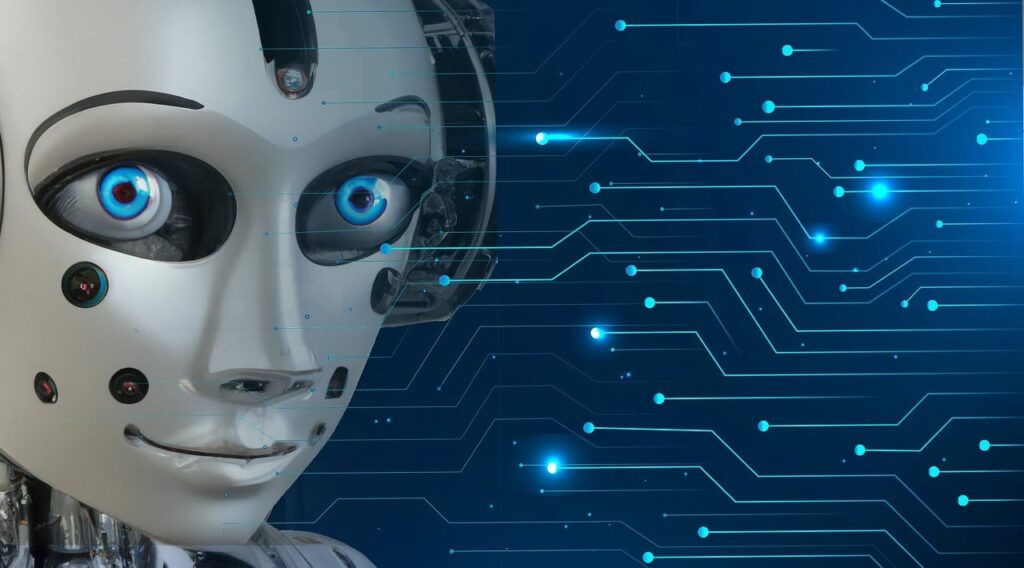
What Is Generative AI?
Generative AI refers to artificial intelligence systems that can produce original content, whether it’s text, images, videos, or even music. These systems are trained on vast datasets and use deep learning to generate outputs based on prompts or user inputs.
For marketers, generative AI offers a way to scale content production without compromising quality, enabling them to meet the ever-growing demands of digital marketing.
How Generative AI is Transforming Marketing
1. Content Creation at Scale
Creating high-quality content consistently is a significant challenge for marketers. Generative AI tools like ChatGPT and Jasper AI can generate blog posts, social media captions, ad copy, and more in seconds.
For instance:
- Social Media: AI can craft catchy captions tailored to different platforms, saving hours of brainstorming.
- Blog Writing: Marketers can generate detailed blog drafts and optimize them for SEO with AI assistance.
- Ad Campaigns: Tools like Persado create data-driven ad copy that resonates with target audiences.

2. Visual Storytelling with AI-Generated Images
Generative AI tools like DALL·E and Canva’s AI design assistant are revolutionizing visual content creation. From designing eye-catching social media graphics to producing unique campaign visuals, these tools offer endless possibilities.
Real-World Example:
Coca-Cola recently used generative AI to create a visually stunning marketing campaign, blending traditional art with modern AI creativity. This showcased how brands can use AI to stand out in the digital space.
3. Hyper-Personalization
Personalization has always been a cornerstone of effective marketing. Generative AI takes this to the next level by creating customized content for individual customers.
Applications:
- Email Marketing: AI can generate personalized email content based on user behavior and preferences.
- Product Recommendations: AI-powered visuals and descriptions can be dynamically generated to match user interests.
- Chatbots: Tools like ChatGPT-powered bots deliver highly contextual and human-like interactions.
The Role of Generative AI in Creative Campaigns
Generative AI allows brands to experiment with creative campaigns without significant resource investment.
For example:
- Video Content: AI can generate short video scripts or even animations, enabling brands to produce engaging content cost-effectively.
- Interactive Experiences: Brands are using AI to create immersive, interactive experiences such as virtual try-ons or gamified campaigns.
Case Study:
Gucci’s virtual try-on campaign used AI to let users experiment with different products online, creating a memorable and shareable brand experience.
Benefits of Generative AI in Marketing
- Efficiency: Marketers can create high-quality content quickly, freeing up time for strategy and analysis.
- Cost-Effectiveness: AI reduces the need for extensive resources like design teams or copywriters for every task.
- Consistency: AI ensures a consistent brand voice and messaging across platforms.
- Data-Driven Creativity: By analyzing past campaign data, AI generates content that aligns with audience preferences.
Challenges of Generative AI in Marketing
While the benefits are undeniable, marketers must navigate some challenges:
1. Maintaining Authenticity
AI-generated content, though advanced, may lack the emotional depth and nuance of human-created content. Over-reliance on AI could risk alienating audiences seeking genuine connections with brands.
2. Ethical Concerns
- Copyright Issues: Generative AI tools often train on publicly available data, raising questions about intellectual property.
- Misinformation: Poorly monitored use of AI could lead to the spread of inaccurate or misleading content.
3. Quality Control
AI-generated content may occasionally produce errors or irrelevant outputs, requiring human oversight to ensure quality.
Best Practices for Using Generative AI
To maximize the benefits of generative AI, marketers should follow these best practices:
- Blend AI with Human Creativity: Use AI as a tool to enhance creativity, not replace it. Let humans refine and personalize outputs.
- Set Clear Guidelines: Establish brand guidelines to ensure AI-generated content aligns with your messaging and values.
- Regularly Review Outputs: Always verify AI-generated content for accuracy, tone, and relevance.
- Invest in Training: Equip your marketing team with the knowledge to effectively use AI tools.
The Future of Generative AI in Marketing
Generative AI is still in its early stages, and its capabilities will only improve over time. Future developments might include:
- Real-Time Content Creation: AI tools could generate content dynamically in response to live events or trending topics.
- Multimodal AI Systems: Advanced tools that combine text, visuals, and audio seamlessly for richer campaigns.
- Increased Accessibility: As AI tools become more user-friendly, businesses of all sizes can leverage their power.
Conclusion
Generative AI is reshaping the marketing landscape, offering unprecedented opportunities for creativity, personalization, and efficiency. While challenges remain, businesses that embrace this technology stand to gain a significant competitive advantage.
By combining the power of generative AI with human ingenuity and ethical practices, marketers can create campaigns that resonate deeply with audiences and drive lasting impact.
As this technology continues to evolve, staying informed and adaptable will be the key to thriving in the era of AI-powered marketing.
